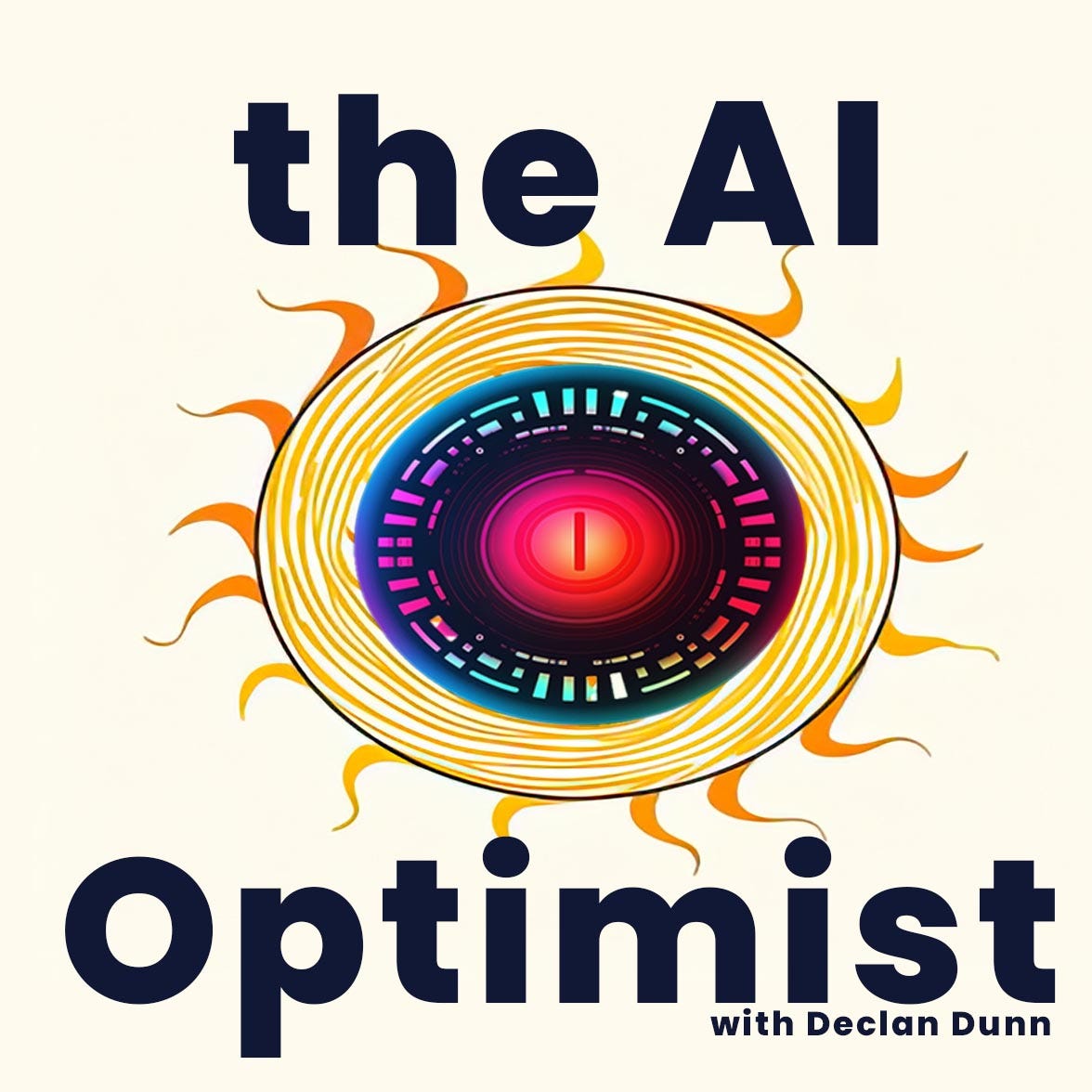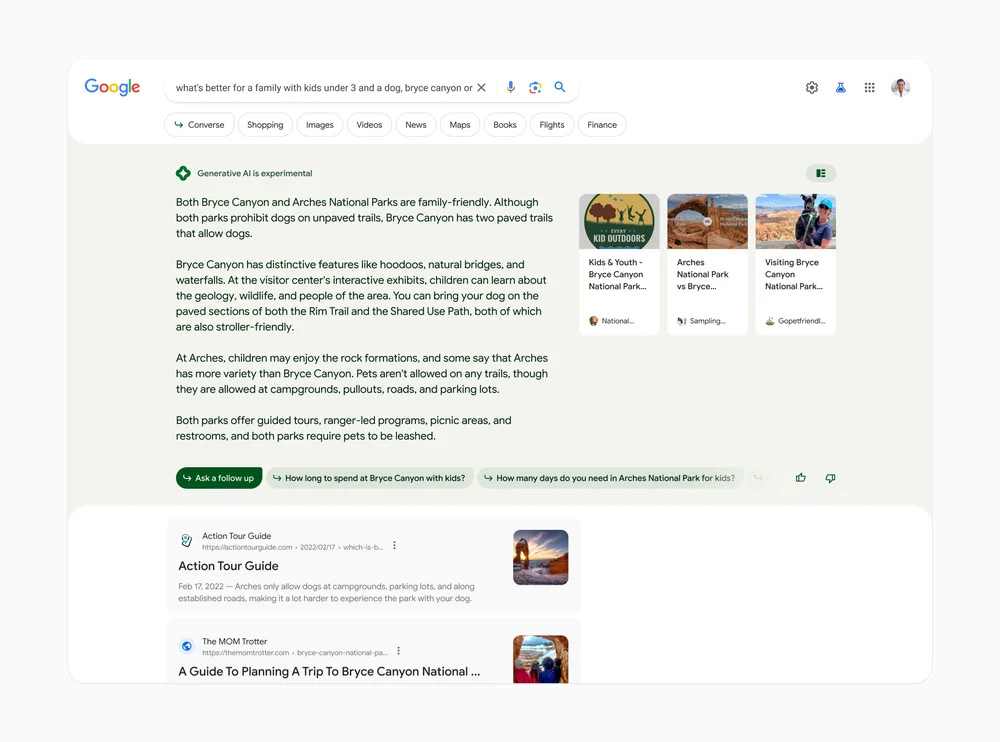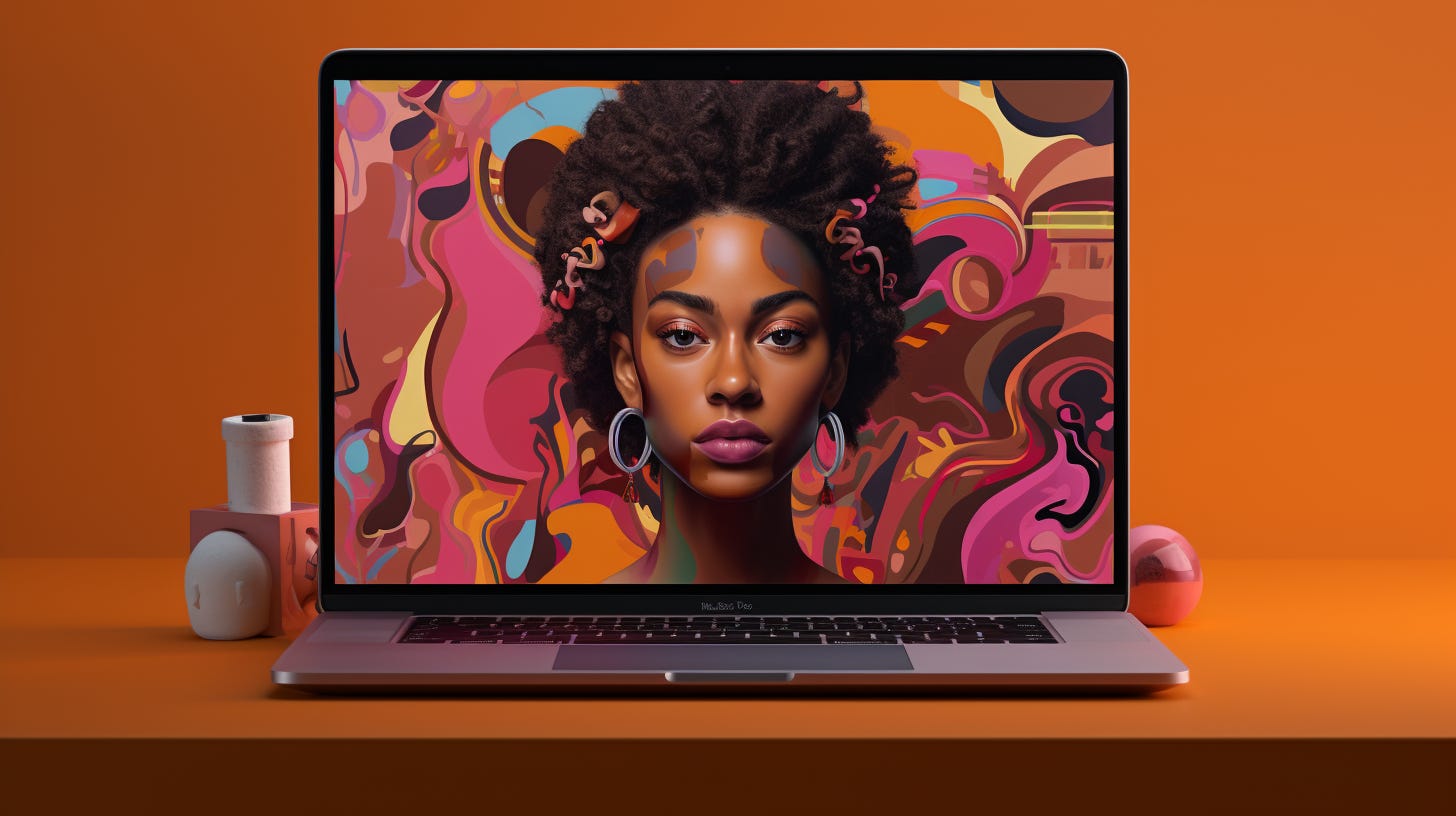AI helps you know what your customers want, their questions, and why they buy. If you stop doing things the old way - like search is the center of your customer’s universe - and follow this plan.
Because 90% of the new business game is showing up with human-generated content!'
Does AI Reveal New Customers for a Window Tinting Company?
A window tinting company was losing business. They didn’t know what to do and went to Jasper AI.
While I don’t know their prompt, it likely went something like this:
As a business consultant for the window tinting business, identify and define five possible customer personas.
Then, include a specific marketing strategy, including why they would use our window tinting products.
From these results came the best answer: families with children to protect them from harmful UV rays.
The company never thought of it. Sales skyrocketed to this new market that they never considered.
Being in business for a long time didn’t help; it stopped them from considering options.
They could have searched and gotten tons of opinions. Paying consultants? It’s the same as a search.
AI gave them options, which is the key to understanding the new world of AI-powered search.
It’s less about organic placements, as they are rare, and more about using AI to know your customers beyond keywords.
Intention begins by understanding who, what, where, why, and when customers act.
Apply that to your content on social media, and you’ll get better search results.
While this sounds like the end of the world, my experiment at The AI Optimist proves that this multichannel approach is vital to succeeding.
Instead of overfocusing on search only, I look for new patterns—intention rather than trying to impress with my knowledge of AI, which my competitors do endlessly.
In a few months of being active, The AI Optimist gets:
25% of traffic from Google search.
25% direct visitors (many from social who type it in or via referrals);
25% from LinkedIn, and
12% from Apple’s iTunes (think Google search is arduous, try Apple!)
How am I doing it?
With a blend of old-school SEO content marketing, social posts that don’t share links to my content, email marketing, and showing up every week on schedule with my podcast.
The old days of posting your links on social for traffic are dead. Post them in the comments, if anywhere.
Social post-sharing links reduce exposure by almost every social platform algorithm.
The impact of AI on search goes way beyond the old meaning of search.
ChatGPT, Bard, and Claude are already grabbing people who used to search—giving them an option not to go to all those sites listed in search results or from paid ads.
2 Search Opportunities – Organic or 🥕 GMO = Google Monetized Opportunities, including their new SGE (Search Generative Experience), paid ads, YouTube, and YouTube ads.
Here’s Google’s SGE promo video; WOW, look at this!
While many predictions of the future impact of AI point to possible events, the impact on search is already here. Consider the facts:
SEMRush did a study in May 2022, looking then at “Zero Click results” on search. That means that someone searched and did not leave Google but got their answers immediately without clicking.
57% of mobile searches and 25% of desktop searches were zero clicks. The SEMRush data is an early study and needs to be more definitive. Yet it points out, before the rise of ChatGPT, an obvious fact: search is changing, and we all have to adapt.
Looking at Google’s vision of future search – SGE (Search Generative Experience) shows how ads, AI, YouTube, and other content buried the old ideal of organic traffic.
While no one knows where this is going, here’s the truth: organic search will lose even more ground in Google search. And where Google goes, Bing will follow.

“SGE is coming, and the worst thing you could do is nothing. You need to lay the groundwork now: sources inside Google tell us that SGE will be rolled out in limited circumstances to a small sample (<1%) of users in Q4.
Google will use this to collect additional data and tweak the product, but competitive pressure from Bing and ChatGPT will likely force a widespread rollout in 2024.
CEOs and founders should ensure that their org has a plan and knows what the impact might be on achieving growth goals in 2024.
Marketing leaders need to direct their teams to develop the approaches and testing to begin to understand the real impact and how to respond to these major changes.
So, what should you do today to prepare for this zero-click world?
There are no definitive answers right now, so the best advice we have is to be engaged, proactive, and real.”
https://www.insightpartners.com/ideas/generative-ai-seo-zero-click-searches/
It shows a comparison between traditional Google search results and a predictive next generation of Google’s search results:
The Old Way - Traditional Google Search Results (Left Side)
The current format starts and ends with paid ads. These are highlighted in pink, showing sponsored results.
Sandwiched between these ads are organic search results, shown in green. These are the ones Google’s algorithm deems most relevant to the search - organic traffic.
Next Generation Search Generative Results (Right Side)
The new format features a domination of paid results at the top and bottom, similar to the current design.
Below the paid ads section are SGE – Search Generative Experience - AI results. SGE is also to the right of organic results.
There are fewer organic search results and fewer chances for websites to get organic traffic.
Another section of ads interrupts organic, followed by a smaller group of organic results and another area of paid ads.
(See the pattern? Google Ads, AI, organic, Ads, organic; this does not look good for the old ways of free search traffic.)
Below are the YouTube results. Given that Google owns YouTube, this provides a video element for searching.
Pros:
Expanded Results: Different types of content, like YouTube videos and AI-generated responses, offer multimodal sources of results sandwiched by ads.
Relevance: AI-curated results from extensive data and advanced algorithms improve the search experience.
Cons:
Reduces Organic Traffic: Organic space is shrinking, pushing businesses to buy ads and learn how to deliver relevant answers that AI picks up on.
Commercial Focus: Paid ads already dominate organic; will this eventually erode trust?
Over-Reliance on AI: One day, somebody will fix AI’s bias and hallucination aspect.
Parallel Worlds: In the old days of search, results began with relevance and popularity.
Ads began to push organic down a few years ago. Now, add AI-curated summaries and videos. Why leave Google or Bing at all?
Variety is key here. Yet this will also challenge ad revenue, as zero clicks impact clicks on paid ads, which keeps Google rich.
Key Takeaways: Google’s predicted search results lean towards a commercial, varied, and AI-centric approach.
Organic is getting buried? 🥑
Whatever it becomes, this trend of fewer clicks from search is definitely on the top of mind for many I’m helping. People stuck in the past wonder why Google is reducing organic results.
Because they get paid by clicks on ads. They get paid for SGE (GenAI) results. They get paid by YouTube. Organic doesn’t produce.
BEGIN WITH CUSTOMER INTENTION – APPLY THIS TO SEARCH, SOCIAL, AND COPY
The basics of SEO that work has, and will be E-E-A-T:
None of this applies if you try to use AI to write everything for you. Business and search are notorious for copycats.
AI learned from the copycats, so the content you get isn’t as good as the information, intent of your customers, and strategy AI can share.
You need to show Google and your customers:
E-xpertise: show in-depth and relevant knowledge. The old listicles and generic articles won’t help anymore. That’s what people are creating with AI. Show you know what you’re talking about.
E-xperience: Real-life case studies and unique points of view are not AI’s strengths. Your competition is taking shortcuts, and you stand a chance by being authentic. Again, don’t tell, show them!
A-uthority: Make your site a source for the markets and topics you focus on. Get people to link to your content. And if you have a podcast, interview leaders, and share links, it’s a way to network and build your authority.
T-rust: Use reliable sources (hopefully your own experience) to make your content accurate.
Plus one more - be consistent. Post regularly, at least once a week. More is helpful in the early days. I post this podcast once a week, and the growth is steady.
THE NEW SEARCH – LLMS, SOCIAL MEDIA, AND VIDEO
Beyond just Google, consider the new types of searches:
🌶 LLMs - ChatGPT, Claude, Bard, Poe, and many others grabbing attention.
How often have you gone to ChatGPT to get an answer instead of Google?
By aggregating search results, it’s a no-brainer to use this for so much research into travel and what to do, and instead of sifting through links, get an answer.
Check for accuracy (notice how we all repeat this), but it’s not bad.
Consider what I’ve been able to do within the past few months:
Deliver an electrical plan to my electrician with no knowledge that saved me at least $5,000;
Create a green screen room for video shoots. It is still in development, but I have a plan.
I researched numerous AI regulations and got summaries and AI technical questions that allowed me to understand some of the issues without being a data scientist.
Doing these on search would force me to collate and organize resources. A few questions and checking facts lead me to a faster solution, far more efficient than a search.
AI alone will impact search volume dramatically. While Google and Bing are trying to integrate it into search, watching if that’s needed will be interesting. Most use AI for discussions, not surfing, but this is super early, so watch what happens.
A search seems so 2018.
Plus, everyone is gaming and competing with similar content for many top terms.
Those who use AI are creating clone-like content.
I’m suggesting you do your writing, and if you use AI, use plagiarism checks like Originality.ai and Grammarly.
🌶Influencer Search and TikTok vids - GenZ uses them to search and others.
Influencers on social media are becoming the community searches people do on social. Ask a friend or find influencers and see what they recommend as an alternative to search.
For GenZ, TikTok has a robust e-commerce influence; using Similar Web in 2022 for Q1 and Q2, many clicks go to Skimlinks and Amazon, both of whom have affiliate programs that are easy to set up and share a link.
GenZ is using TikTok as its search engine. And it’s not just them.
“In the last decade, though, the world’s fastest-growing marketplaces have cropped out of this China-laid groundwork. In the fiscal year 2021 (ending March 31, 2021), Alibaba Group’s revenue was RMB 717.3 billion (approximately $109.5 billion), according to the company’s annual report, growing at a 31% CAGR over the last three years.
Shein, the largest global fast fashion company, exploded over the last three years, outpacing Zara, Forever21 and H&M, raking in $15.7 billion in revenues in 2021 and growing at a CAGR of 49% over the last three years.
And lastly, PinDuoDuo just launched its cross-border marketplace, Temu, and did $14.7 billion top line, growing at a CAGR of 131% over the last five years, from $300 million to $18 billion.
So what’s changed? American tech companies’ ability to capture attention.
Until now, platforms like Google, Facebook, Instagram and Amazon maintained status as the world’s most trafficked websites.
And as the most trafficked websites, filled with social media and products, these companies have controlled discovery and captured a cut of the transaction of slinging largely Chinese goods. “
https://www.glossy.co/fashion/op-ed-the-real-tiktok-threat-is-in-shops-and-cross-border-commerce/
Looking at the financial figures coming out of TikTok, you understand that, unlike any other social platform, people engage and buy things directly on TikTok and from links off TikTok.
While this happens on other social platforms, it’s not close to the volume.
AI’s TikTok role? Check the algorithm; it’s addictive and embedded, not featuring single influencers but sharing the trends.
Shein, for example, scrapes social media for fashion ideas, trends, and products people buy. And those products move because they can quickly create them within a week.
Some have accused Shein of stealing their ideas; their data-driven AI is years ahead of others in the fashion industry, though many new companies are competing.
It used to be that Google was one of the only high-intent places to market; now TikTok is oddly becoming bigger than Google Search.
Time will tell, but social media is not what it used to be, and much of that is due to AI algorithms that know, follow, and embed buying behaviors.
🌶 YouTube - yes, it’s Google and its search power; the Tiktokification spreads to the short vids that have grown in the past year.
YouTube is also a search engine for this content; many go there to learn or find products.
The impact of short videos is felt across the social media spectrum and won’t die down.
🌶 And, of course, Facebook, Instagram, Snapchat, and X are all used as semi-search engines to varying degrees.
It’s the idea of friends as influencers, with retargeting ads and deep knowledge of behaviors guiding people to purchase in ways they never did.
Many searches for what they like (intention found in hashtags), follow influencers, ask friends, and often don’t click like they used to when going to a site.
Paid ads are often the way in, with a steep price in search because of the targeting and intent involved.
But if you want to grow in business, doing some paid ads is a must.
Podcasts Give You Audio, Video, and Written Content
With a podcast, most quit their shows after 10-20 episodes. It takes time and money if you need instant results.
Even then, time and repeat episodes earn you a following you most likely cannot buy.
Those who keep doing their podcast get remembered more than those who quit and try other shortcuts.
Podcasts allow me to have video, audio, and written content. I click a button on Substack; I get a free transcript.
I import that audio into Adobe Premiere for video, and it creates accurate captions automatically. Even Slack does this now; transcriptions are free and available. You need them for videos!
Plus, numerous tools will take your audio and break it into short snippets and videos with headlines, descriptions, and links.
PROMPT POWER
Simple SEO and Content Marketing Strategy with Prompts
Begin with the end in mind: How do you position yourself, what are the keywords, and what are the intentions and needs of your audience?
Ask AI by taking the following and getting into a discussion for 30-60 minutes.
Here is a sequence of prompts to get started, and there are tons of examples online.
SEO Positioning
Create a list of SEO keywords for (insert your product or business). Include 2-3 keyword phrases, then a separate section for long tail keywords.
INTENT
Why do people search for these keywords? Define the reasons behind their searches, including what they are confused about and possible answers they would be seeking.
As an SEO agency professional, develop a list of 10 popular questions related to (keyword) or (topic of your business)
STRATEGY
Define seven keyword strategies for (insert your business and location if relevant for local SEO)
Develop a content marketing strategy for next year using the top keywords and methods mentioned above.
PODCAST OR BLOG POST TITLES TO DEVELOP
Write ten blog post titles based on the content suggested above.
Write an outline, summary, and subheadings for your blog posts.
SOCIAL MEDIA POSTS
Write ten social media posts based on the content suggested above. Include 1 for LinkedIn of 500 characters, one of 280 characters for X/Twitter (much more if you pay), 500 words for Facebook, etc.
Write social media headlines that engage users and encourage interactivity for each post.
Create Your Content with These Ideas!
It’s easy to ask AI to write it, and that’s one path. SEO has already been a copycat game for years, and the content coming out is often directly plagiarized from another article.
Writing has positively impacted clickthrough rates, as GenAI has no emotions and is not a human.
Creating original content is your strength and opportunity; you get all you need in a few minutes to focus on the writing.
If you do this through GenAI and edit it, you’ll spend about the same time editing as you would writing, and it won’t be original nor stand out.
Get Out on Social and Communities – Build Your List and don’t rely on social platforms.
Social is the place to be, but with the shifting tides, beware.
For example, Facebook’s algorithm has gotten messy the past month, shutting down massive amounts of businesses that have been using the platform legitimately for years.
I know several people who’ve had ten years of content and followers wiped out without doing anything wrong. All because the algorithm has gone batty; this is no joke.
You don’t own social followers, and building your community is critical.
Do this with an email list; it’s the best way and a great asset for your business.
Build your community on Slack, Discord, Circle, or other places, though understand that getting people to use them frequently is tricky.
It would help if you made it a place they want to return to and connect with people.
Navigating the shifting landscape of organic search visibility requires websites to be adaptable and strategic.
Given the predicted (key here is no one knows) changes to Google’s search results, here are some strategies websites can consider:
1. Diversify Traffic Sources:
Social Media: Engage audiences on platforms like Facebook, TikTok, Twitter, LinkedIn, and Instagram. Share content, interact with followers, and run targeted ad campaigns.
Email Marketing: Build an email subscriber list. Regular newsletters with valuable content can drive consistent traffic.
Collaborations & Guest Posting: Collaborate with other websites, influencers, and industry leaders to tap into their audience.
2. Optimize for AI and Be Relevant:
Produce relevant content over time, ensuring consistent traffic irrespective of changing trends.
Google often displays these “position zero” AI results, and sometimes snippets, above all other organic listings. Ensuring content answers common questions briefly can improve the chances of being featured.
3. Video Content:
Given the prominence of YouTube results, creating and optimizing video content becomes vital. Ensure video titles, descriptions, and tags are SEO-friendly.
4. Get Good at Paid Advertising:
Since paid results still dominate, allocate a budget for Google Ads. Regularly analyze and optimize campaigns for better ROI.
Improve User Experience (UX):
Google factors in user experience when ranking websites. Ensure fast loading times, mobile optimization, and intuitive site navigation. So many must remember that this element is vital for Google, Facebook, et al. to determine if your site is relevant.
When people stay at your site and engage, you win. If they leave in 30 seconds or less, keep improving because this hurts your reputation and business.
5. Build Your Community:
Foster a loyal community around the brand on platforms like Discord and Clubhouse or through webinars and live events.
Key Takeaways
With changing search result layouts and the growth of AI, businesses need to show up in a few places.
Prioritize diversifying traffic sources, including search, social, communities, email, and paid ads, and create joint ventures with others looking to grow their business.
A Podcast is excellent for this because, for a short talk, you share interesting content with your audience, and the guest shares it with their audience.
Optimize video, stay updated with SEO trends, and enhance the overall user experience at your website, social media, and wherever they go to learn about you.
The shift isn’t just about survival but finding new, innovative ways to thrive.
Infuse your content with the power of your customer’s intention, creating based on what is relevant to them and not what you make up alone.
What is AI-powered search doing?
It’s a bridge from old search guesswork into a new world, connecting you to why customers do what they do and building that understanding into your content.
Take these steps, and like this podcast, and with patience, you’ll see.
90% of the game is showing up with human-generated content!
RESOURCES
SEARCH
Adam Riemer’s Blog: One of the best I know, with great advice and mad skills.
AI vs Human Written Metadata: Which Leads to Higher CTRs?
From Seer Interactive, excellent resources and great updates they share.
TOOLS
Google Search Labs: Free way to see what they are up to


















